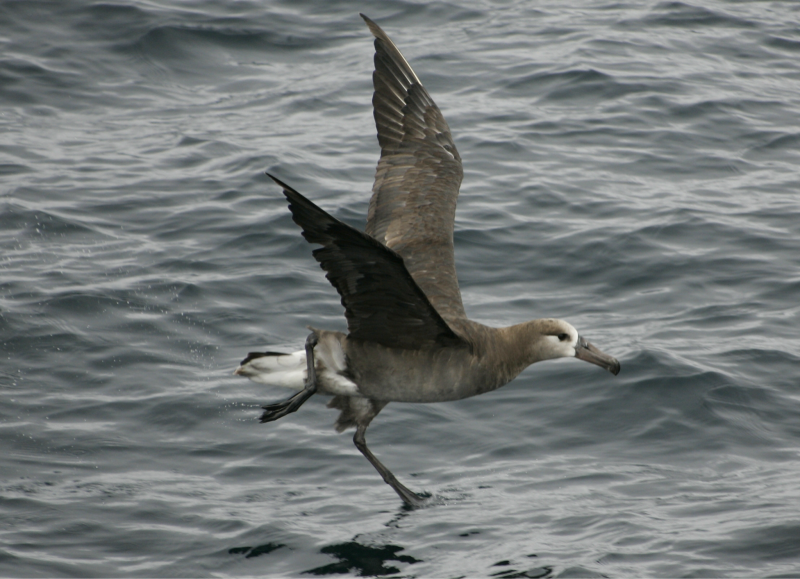The Council for the Conservation of Migratory Birds has presented NOAA Fisheries with the 2023 Presidential Migratory Bird Federal Stewardship Award. Each year, the Council recognizes projects or actions with a focus on migratory birds that are conducted by or in partnership with a federal agency. NOAA Fisheries won the 2023 award for its project Seabird Conservation Through Fishery-Based Data: The NOAA Fisheries-Oikonos Seabird Bycatch Project. The project aims to maximize the scientific value of birds taken incidentally in the northeastern Pacific Ocean.
While NOAA Fisheries works diligently to minimize and mitigate bycatch in federally managed fisheries, seabirds are sometimes incidentally taken. Since 2007, NOAA Fisheries has been collaborating with Oikonos Ecosystem Knowledge to gather data from seabird bycatch by conducting necropsies on carcasses instead of disposing of them. At-sea observers collect carcasses and send them to the researchers at Oikonos for data collection. Participating programs include:
- Pacific Islands Regional Observer Program
- North Pacific (Alaska) Observer Program
- West Coast At-Sea Hake Observer Program
- West Coast Region Observer Program (longline fisheries)
The project is the only one of its kind that collects data on age, sex ratios, stomach contents, and DNA from seabirds incidentally taken in the U.S. commercial fisheries. In 2022, the project’s researchers surpassed 3,700 necropsies. Data collected from these procedures are revealing new information about seabird genetics, diet, and other key aspects of their biology and behavior. For example, through Oikonos collaborator William Walker, researchers have learned that Laysan albatross scavenge on unusual squid species that live deep in the Pacific. The data have also provided researchers with a better understanding of plastic ingestion and contaminant levels in “healthy” birds. “This is truly an incredible dataset to work with,” says Jessie Beck, seabird coordinator for NOAA’s Alaska Fisheries Science Center.
Information gathered through these efforts is key to the management of seabird populations and contributes to the conservation of species of concern, such as:
- Black-footed albatross
- Laysan albatross
- Short-tailed albatross
Because these species often live in remote places like Papahānaumokuākea Marine National Monument, data from the project are even more valuable. “This program has allowed us to understand not only what types of birds are caught, but also to have a deeper sense of their ecologies and natural histories. It is very hard to study these species at sea, and studying these carcasses gives us a unique opportunity,” Beck says.
“Since most of the seabird species caught as bycatch in U.S. fisheries are migratory and spend most of their lives at sea, it can be difficult to understand impacts to a species like a black-footed albatross across fishery management regions,” Beck notes. With data collected through the project, though, researchers are able to link black-footed albatross caught in Alaska directly to the Hawaiian Islands where they were born. This provides them with a more complete understanding of these birds’ life histories.
These invaluable insights will, in turn, help scientists to reduce bycatch and conserve these species. “The NOAA Fisheries-Oikonos Seabird Project not only helps us understand the impacts of bycatch on birds in specific fishery regions, it connects managers and scientists across NOAA regions and partner organizations,” says Beck. “It helps us to build a broader, more comprehensive picture of cumulative threats and ecologies of migratory birds in the Pacific.”






